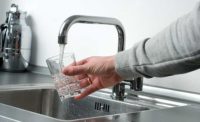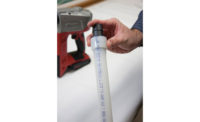There are several things to consider not readily covered in NFPA 13D and 13R: water supply, backflow prevention, alarms/accessories and fire department connections.
Real estate developers and homebuilders regularly negotiate with communities over the conditions for obtaining residential construction permits. Cost is a paramount issue for both parties: Developers and builders want to improve their bottom line; communities want to reduce the cost of the growth for their residents.
Public fire protection is a key cost. New residential growth requires large water mains, wide roads and closely spaced fire hydrants for manual fire suppression. Residential fire sprinkler systems seem to be an obvious answer to many of these obstacles, yet many groups object to their installation. Their resistance is usually rooted in misconceptions regarding either cost or performance.
Many developers and builders are unaware of the cost reductions that they and their communities can achieve by installing multipurpose residential fire sprinkler systems in their projects. A relatively new option in the residential fire sprinkler market, these systems are quickly gaining acceptance and even preference in many municipalities.
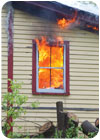
A multipurpose residential fire sprinkler system, by definition, combines the domestic potable cold-water system with the residential fire sprinkler system. As a result, one redundant piping system is eliminated, reducing material and labor costs, as well as reducing construction and coordination time on site. The resulting system should be several percentage points less expensive - from an installed-cost standpoint - than the two systems it replaces if they were run independently.
The design parameters for multipurpose residential fire sprinkler systems may be found in the pertinent National Fire Protection Association (NFPA) standards:
- NFPA 13D, Standard for the Installation of Sprinkler Systems in One- and Two-Family Dwellings and Manufactured Homes; or
- NFPA 13R, Standard for the Installation of Sprinkler Systems in Residential Occupancies up to and Including Four Stories in Height.
The standards are fairly straightforward in terms of requirements. Our purpose here is to alert the design engineer to possible issues not readily covered by these standards, involving water-supply pressure, backflow prevention, alarms and accessories, and fire department connections.
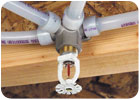
A typical network fire sprinkler installation using PEX tubing. The tee is installed to provide a connection to the plumbing fixture(s) within the dwelling. Photo courtesy of Uponor.
Water Supply
Depending on the standard used, water supply requirements will vary. When designing an NFPA 13D-compliant system, domestic plumbing supply does not usually need to be accounted for in the water supply calculation.
The exceptions to this rule are cases in which the water-service piping supplies more than one dwelling unit. In these designs, a five-gallon per minute (gpm) flow must be added at the point where the system piping separates to feed the individual units. This additional 5 gpm ensures that the service line from the supply source to this separation point is sized to support both domestic flow and fire sprinkler flow as needed.
Normally, a minimum 3/4-inch water meter will be required when multipurpose residential sprinkler systems are installed. Why the larger size? Because smaller meters cannot move enough water to supply the sprinklers. A 5/8-inch water meter is rated for a maximum flow rate of 20 gpm. Often times, the flow rate for the residential sprinkler system exceeds this flow rate.
Per the standards:
- For NFPA 13D systems, the two most hydraulically remote sprinklers must operate simultaneously. That means a minimum of eight to 13 gpm, depending on the sprinkler, or 16 to 26 gpm total.
- For NFPA 13R systems, the four most remote sprinklers must operate at the same time.
These flow rate requirements apply to all types of residential fire sprinkler systems, whether multipurpose or standalone. And keep in mind, eight gpm is the minimum flow requirement for a 12x12-foot area. Depending on coverage areas, sprinkler type and ceiling slope, individual residential fire sprinkler flow may actually be in excess of 20 gpm. In an NFPA 13R application, this high flow may be exacerbated by building height, resulting in higher-than-anticipated system design pressures.
As a system designer, you must make sure that all affected disciplines realize the types of flow requirements a fire sprinkler system demands. Due to the combined nature of the system, however, requirements for a totally separate, standalone fire protection service line - including secondary taps to the city main, redundant water meters and associated piping - can be eliminated.
When designing NFPA 13R-compliant systems, you must take into account the domestic plumbing supply in all cases. Domestic fixture unit loads need to be calculated and converted into gpm to determine the size of the water supply main and the water meter. NFPA 13R contains direction in the form of charts, or the designer may produce calculations to support the design.
The bottom line: Give long and serious thought to the water meter make and model used in any type of sprinkler system. Different designs, even within a given manufacturer’s line, have different pressure losses across the meter. You certainly want to avoid having to change out an undersized meter after the fact.
In many cases, the designer has little or no voice in the water meter employed by a municipal water purveyor. That’s unfortunate. By anticipating the higher flows associated with the sprinkler system, the designer can opt to increase the service line and meter size to offset the corresponding higher friction losses and, as a consequence, pressure loss. This, in turn, can reduce the pipe size required inside the building, decreasing the overall cost of the project.
Water authorities often mistakenly assume that a request for a larger meter indicates more water will be used (so the owner should pay more). The reverse is actually true.
The water used by residential fire sprinklers in a fire will statistically be one tenth the amount used by manual fire suppression. Fire sprinklers significantly reduce demand on the water system - they are, in fact, a water conservation tool.
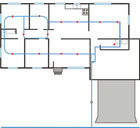
Simple looped multipurpose system installation. Piping must be installed with no dead ends to ensure a non-stagnant system.
No Check Valve or Backflow Preventer Requirement
Health authorities have grown increasingly concerned about the contamination of potable water if stagnant water leaks into the system. Traditionally, a check valve is installed where a line containing stagnant water intersects the potable water line. But authorities fear that the check valve could leak if the water pressure in the potable water system becomes lower than that in the stagnant system.
Stand-alone sprinkler systems hold stagnant water in place through the use of check valves, and the argument for better protection has spread to these systems as well. Many states require double check valve assembly (DC) or reduced pressure (RP) backflow prevention valves, which are costly and require annual inspections and maintenance by a specialist. Many owners are either uninformed or unwilling to comply with such inspections. Municipalities have only recently realized and reacted to this potential threat to the potable water system.
Multipurpose residential fire sprinkler systems offer an alternative to this dilemma. Since multipurpose systems also are potable water systems, they completely eliminate the need for cross-connection control.
To protect both the building occupants and potable water supplies, all system components must be listed and/or approved by the proper authority, such as Underwriters Laboratories (UL), for fire protection service; and NSF Intl. (formerly the National Sanitation Foundation), for products that interact with the potable water system.
In the case of multipurpose residential fire sprinkler systems, all components must be recognized by a third-party certifying agency, as required by the various relevant codes and standards. For NFPA 13D designs, valves, hangers, tanks, pumps and many other system components are not required to carry a special fire protection service listing. Conversely, these same components are required to be listed in NFPA 13R applications.
For many types of valves and hangers, the multiple listings are common. For devices such as tanks and pumps, they most certainly will not be common. Again, the designer must be vigilant and investigate the materials and devices specified.
Even the fire sprinklers themselves are not immune. Designers need to specify and design multipurpose systems only with sprinklers that carry NSF listings for connection to the potable water. Not all fire sprinklers - nor even all fire sprinklers from any particular manufacturer - carry the NSF label. However, sprinkler brands and models are numerous enough, so that the designer has several options in installed style, color, flow and pressure characteristics.
Many system designs and pipe types may be used to create a multipurpose residential fire sprinkler system. Tree layouts, simple loops, grids and compound grids may all be employed. In addition, various piping materials may be used to achieve the final multipurpose result.
The pipe type selected for the system must meet two main criteria:
- It must be listed for the fire protection service required.
- It must also be an acceptable piping material for potable water service in the eyes of the local approving authority.
Examples of the types of piping products available and commonly used for these systems include copper, chlorinated polyvinyl chloride (CPVC) and cross-linked polyethylene (PEX). All of these piping products have features and benefits that may make them more or less attractive on a particular project. The designer should carefully weigh and understand all the options before deciding on the pipe type.
Not all variations of the piping products, especially the plastic piping materials and fittings, carry the required listings for fire sprinkler service. Refer to the certification agency’s listing and/or the individual piping manufacturer’s listings and information.
Alarms and Accessories
Since water may flow to cold-water domestic fixtures at virtually any time in a multipurpose system, how can the latter possibly be alarmed? The fact is, not only can alarms be very easily incorporated, but there is also more than one way to install them.
First, the designer must determine whether alarms are required at all. All fire protection professionals would agree that alarms are a good idea, but fire sprinkler systems designed under the NFPA 13D standard are not required to include audible alarms if the building includes smoke alarms or detectors installed in accordance with NFPA 72, National Fire Alarm Code. All new residential construction and the vast majority of existing homes include smoke detection/alarms. Systems designed under the NFPA 13R standard are required to include alarms as part of the design and installation.
We’ve already discussed how water meter sizing impacts the available pressure in a fire sprinkler system. Water filtration and softening equipment also have trouble accommodating the high flows required. Typically, a larger-diameter bypass arrangement is used to divert flow around the water treatment equipment. This also gives the designer his first opportunity to easily locate fire alarm flow switches.
Since the bypass piping is used only during times of fire sprinkler activation and the associated high flows, a standard paddle-type flow switch may be installed into the bypass. An alarm would sound upon fire sprinkler activation as with any other type of fire sprinkler system.
If no filtration or other types of equipment are present in the system, specialized multipurpose flow switches may be incorporated. These alarm switches use technology that measures the flow across the device. During nominal plumbing operation, no alarm is registered. Should flow increase to levels that would be consistent with fire sprinkler activation (typically above 12 gpm), then and only then would the switch go into alarm mode.
A multipurpose switch of this type is most often used in NFPA 13D applications. Due to the flow requirement, its use would be somewhat restricted in an NFPA 13R design.
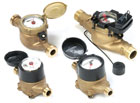
Fire Department Connections
Fire department connections (FDC) are not required in NFPA 13D applications, but are required in an NFPA 13R design. They create a specialized concern when incorporated into multipurpose residential fire protection systems.
Keep two things in mind regarding FDCs and multipurpose systems:
-
Since the system is a potable water system, the introduction of any non-potable water creates a potential contamination problem. In the aftermath of a fire department pumper truck connecting to the system, the piping must be cleaned and disinfected.
-
As these systems are combined with the cold-water plumbing, they will be connected with fixtures and devices that are not designed to be pressurized to high levels.
Fire departments that might respond to incidents at these locations should be notified about such pressure limitations. To avoid any potential damage to building components, the fire department connection itself also should be marked with signage, indicating the limits to which the system should be pressurized.
Conclusion
When incorporating multipurpose residential fire sprinklers into their project plans, system designers must be mindful of potential pitfalls not readily apparent in the relevant NFPA standards. To recap, the most critical of these are as follows:
-
The viability of the system can be adversely affected by something as innocuous as a water meter. Not all meters are created equal, as friction losses vary greatly by manufacturer. Value-engineering this piece of the puzzle outside the building can deliver greater design flexibility inside in the form of more cost-effective pipe sizing and fire sprinkler spacing.
-
A multipurpose system is a potable-water fire sprinkler system. All components must be listed for their applicable fire service use, as well as approved for use with potable water. Piping, tanks, pumps and even the fire sprinklers themselves used in the project must be investigated.
Many fire protection experts predict that building codes will require sprinkler systems in both single- and multi-family construction within the next five years. Design engineers need to be ready to specify systems that maximize protection for occupants, as well as maintain competitive project pricing.
Multipurpose systems offer builders, developers, designers and occupants a method to incorporate life-saving technology into their designs, while also achieving lower installed costs. These are systems everyone can truly live with.
